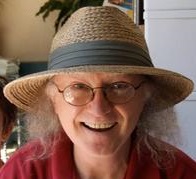8.9: FRET
- Page ID
- 10447
Another method for detecting molecular interactions is Fluorescence resonance energy transfer (FRET) - also called Förster resonance energy transfer, resonance energy transfer (RET) or electronic energy transfer (EET). The technique is based on the observation that a molecule excited by the absorption of light can transfer energy to a nearby molecule if the emission spectrum of the first molecule overlaps with the excitation spectrum of the second (Figure \(\PageIndex{1}\)) This transfer of energy can only take place if the two molecules are sufficiently close together (no more than a few nanometers apart).

In the technique, a donor fluorophore or an acceptor fluorophore is covalently attached to two molecules of interest. The acceptor fluorophore is designed to accept energy from the donor molecule (orange dotted line in Figure \(\PageIndex{2}\)) and fluoresce at a unique wavelength (red arrow) when it receives that energy from the donor.

Figure \(\PageIndex{2}\): Fluorescence resonance energy transfer between donor and acceptor chromophores. Image by Pehr Jacobson
Further, the wavelength of light that the donor absorbs is uniquely tailored for the donor fluorophore and has no effect on the acceptor fluorophore. The only way the acceptor can fluoresce is if it is close enough to receive energy transferred from the donor (red arrow). This fluorescence will have a unique wavelength, as well. If the donor and acceptor are not close enough together, the donor fluoresces and emits light corresponding to the green or black arrow. These are different wavelengths than that of the red arrow.
The experiment begins in the cell with one protein with a donor fluorophore and the other protein with an acceptor fluorophore. Light of a wavelength that excites the donor fluorophore is shined on the cell. If a protein with a donor interacts with the protein carrying an acceptor, then energy transfer occurs from the donor fluorophore to the acceptor and the unique fluorescence (red line) of the acceptor is detected. If the two proteins do not interact, then little or no fluorescence from the acceptor is detected.


